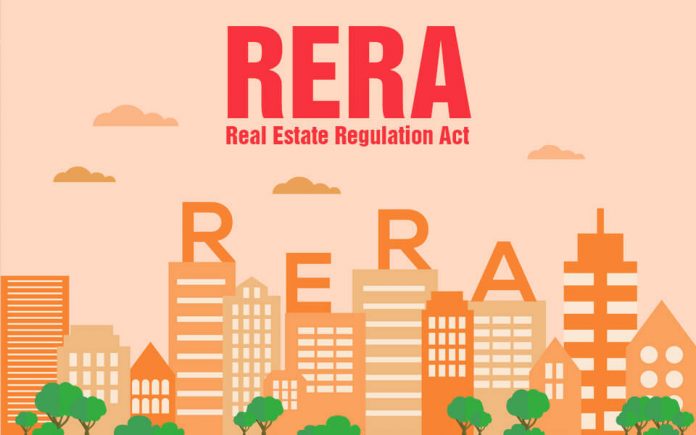This article has been written by Advocate Priscilla Rodrigues, pursuing the Certificate course in Real Estate laws from LawSIkho.
Table of Contents
Introduction
Zoning is a form of urban planning in which a municipality or other level of a government divides land into areas called zones, under which, certain land uses are allowed or prohibited. This is done in order to encourage proper land use for different purposes. Zone for a specific reason is designated, such as residential, commercial, industrial etc or it may integrate several compatible uses.
In practical terms, zoning is also done in order to stop future developments from interfering with current uses of the land and to preserve the “essence” of a group. It is a tool used by local councils to regulate the development and usage of real estate in a particular area. Zoning controls how much development will take place and direct land use in such a way as to make it financially, geologically and physiologically purposeful.
What is zoning and a zoning plan?
A simple and clear building regulation helps to improve property rights aims to protect the consumers from defective construction practises and leads to the creation of additional capital in the country. But if the methods are too complex or too straightforward or too cost-intensive, the developers prefer to continue without even a permission. In certain emerging countries, almost 60-80 percent of construction projects are executed without sufficient licenses and approvals.
Building regulation is a significant factor that many businessmen take into account when determining where to set up their business. Zoning laws may provide a useful structure for investors by determining the most suitable location for their projects before applying for a building permit. They can also enable local authorities to create a reliable and clear basis for issuing and approving building permits or to refuse to accept construction proposals. An important aspect of building regulation is zoning as it governs the position and the use of some types of structures within a particular city.
It is therefore important to have an up-to-date zoning system not only to promote collaboration between agencies required for prosperous urban planning but also to ensure productivity in the issuance of building permits. It is also critical that such zoning structures be implemented through a consultative process with broad participation to ensure that they support all social circles.
A zoning plan is a comprehensive map of land use management with guidelines for its use, preservation and layout of regions and physical environments. Zoning plans shall be adopted by the municipal body, but maybe drawn up by both public and, in certain cases, private entities.
The level of accuracy will largely depend on the intent of the plan and whether further detailed zoning plans are developed for parts of the plan as the time of construction approaches.
Zoning plans shall always be formulated before approval is given for major building work. The municipality may incorporate a provision in the land use aspect specifying that zoning plans are to be established in other cases as well. The municipality shall determine the need to prepare zoning plans in the urban planning policy and the land-use portion of the urban master plan.
The zoning plans shall include a summary of the plan detailing the goals of the plan, its key substance and the impact of the plan. Descriptions of proposals that may have a substantial environmental impact or community shall be complemented by a separate evaluation and explanation of the consequences of the proposal almost like an environmental impact assessment.
The zoning plan implemented is binding for future land use in the city. This ensures that initiatives or events that are contradictory to the plan are not allowed unless exemption is given. The legal impact of the plan relates to the introduction of new projects, but planning regulations can also, in certain situations, contribute to tougher standards for current operations, such as noise regulations. If a building application is submitted in compliance with the zoning plan, it shall be granted only if the proposal complies with the plan and the regulations relating to the building application.
Types of zoning
Zoning can be classified into residential, commercial, industrial, agricultural, Rural, combination zoning, historic zones and aesthetic Zoning.
Let us look at what comes under each of these heads:
Residential Zoning
It is the zone with single-unit or multi-family dwellings, commercial establishments may or may not be situated within these neighbourhoods. The area consists of multiple-unit buildings, high-rise apartment, districts and construction projects. A residential area can include temporary accommodation areas, such as motels and hotels, and residential areas with restricted commercial buildings, but may not include retail shopping facilities. A Residential zone covers hospitals, nursing homes and similar establishments.
Commercial Zoning
Commercial Zoning comprises Office Buildings, Shopping malls, Nightclubs, Hotels, warehouses. The Commercial zoning legislation governs the type of operation that can be carried out by a business in a specific region and category of business that may occupy a zoned region.
The accessibility of parking can have an effect on the type of commercial area permitted. In addition, there could be regulations on the proximity of some kinds of enterprises to others. Many zoning regulations forbid or restrict adult entertainment facilities to a certain geographical area. Some prohibit certain activities over a certain distance of established schools or churches.
Industrial Zoning
Industrial zoning is also widely used in areas containing factories, although this land is mostly for processing or manufacturing purposes. Some typical buildings in industrially-zoned areas include storage facilities, chemicals factories and even airports. Industrial zoning includes how much noise the establishment will make, any environmental concerns for the surrounding area and how much space the buildings will take up.
Agricultural Zoning
Agricultural zoning is mostly about preserving a parcel of land from non-farm use. There are many considerations involved in agricultural zoning, such as the suitable size of the property, the number of non-farm dwellings permitted, the users and activities permitted, the barrier dividing the farm, and no farm assets based on the size.
Agriculture zoning is not such a simple one because the laws in its policy need to take full force so that you do not fall out of the position when preserving it. For the farm, the same applies. Agriculture zoning is said to be a portion created to protect farmland and non-farmland activities which are not strong enough. The laws for the same are created by the local authority.
Why are zoning regulations needed?
Zoning is undertaken to encourage local growth and urban planning. In 1965, a committee called Urban Land Policy was created with the objectives to achieve the best social use of urban land; to make land available to both public authorities and individuals in ample amounts, at the right time and at fair prices; encourage cooperative group efforts and legitimate individual developers in the field of land, housing and construction development; using land as a tool to fund economic growth by recovering the unearned income that mostly accrues to the owners of private land.
The landmark judgement of Delhi Pradesh Citizen Council Vs Union of India, 2006, the Supreme Court highlighted certain directions to be followed in terms of the kind of activities that cannot be held in residential areas which are as follows:
- A residential area cannot have a banquet hall.
- Any exchange or operation involving any type of product or method that is obnoxious, harmful, inflammable, non-compatible and polluting.
- Retail Shops selling Liquor, Construction materials like timber, marble, iron, steel, sand, firewood, coal, hazardous materials and other bulky materials cannot be sold, Automotive repair and workshop repair shops, bike rickshaw repair, tyre solving and re-treading and battery charging;
- With the exception of architects, chartered accountants, physicians and lawyers, technical practices would not be permissible. Even by these practitioners, no more than 50 percent of the allowable coverage in residential premises and by someone who does not live in those premises would be carried out by professional practice.
With this we can see that with the ‘making of laws’ the judiciary has always been strict, however, the enforcement of these laws need to still be worked upon.
Challenges zoning regulation faces
Like any other laws, zoning regulations also face certain challenges such as limits on the power of government to control land use, some of which can provide a basis upon which such regulations may be challenged. Zoning ordinances must be rational based on all factors involved, such as the need of the municipality; the intent of the restriction; the location, size, and physical characteristics of the land; the character of the neighbourhood; and its effect on the value of the property involved. Zoning is based on the fact that in compliance with a comprehensive plan it serves the benefit of the whole city.
The zoning of individual land parcels in separate ways from the surrounding property, mainly for the private interests of the owner of the property so zoned shall, without fairgrounds, not be questioned. Restriction based on the exclusivity of property is prohibited and only if the government shows an overwhelming interest that cannot be served in any other way can classification which defines a racial or religious category be upheld.
The Laws also established zoning appeals boards in many jurisdictions to deal with these problems. They are quasi-judicial bodies that can conduct hearings with witnesses’ sworn testimony and whose decisions are subject to judicial review. Given the complexities of zoning law and the peculiar nature of the zoning appeal boards, it is not advisable for the owner to argue his case without legal aid who challenges a zoning requirement.
Strategies to improve the situation of zoning in India
It seems that India needs to move towards decentralized and strategic urban planning, as the United Kingdom has done. New changing demands need to be addressed by urban planning. In order to satisfy systemic and geographical transition demands, the planning structure must also be dynamic. “In order to promote inclusive urbanization, the government must consider urban planning development as a phase of value creation through the market, giving ample space for value capture and recycling.
In India, the method of allocating land usage focuses on land acquisition for public purposes (roads, parks, utilities etc). There is a displacement of property today, the allocation of land is coerced by the government through the Land Acquisition Act of 1894 for ‘public purposes.’ Land reform is required, particularly the demand for a financial regularization policy based on redistribution rather than displacement, excess land should be allocated for strategic reasons.
At the master plan level, land is purchased which is implemented in various states. Certain states also implement the land pooling process (area plan) in addition to the development plan (which is land use, legislation and particular projects) for the towns.
In order to optimize social welfare, harm must be avoided by separating the land uses that are incompatible with each other and simultaneously doing good by encouraging the promotion of the land.
Can zoning be changed?
The zoning can be changed in certain situations. Following are the ways in which one can apply for a change in zoning:
Application with the local authorities
If the zoning on a plot of land is conflicting with the usage desired by the land owner, the landlord can request a change of zoning from the local jurisdiction. Every province has laws and regulations of its own. Usually, however, there is a request and a charge, followed by some kind of inquiry at which the applicant discusses the request and the reasons for the change requested. To express the proposed proposal, surveys, sketches, photos, and even models can be used. To help with the rezoning process, many owners employ engineers or attorneys. If the applicant is not successful in achieving the change, either through the administrative framework of the governing body or in a court of law, there may be an opportunity to appeal the decision.
Variances
A variance is a proposal to deviate from existing criteria for zoning. It allows the owner, if authorized, to use the property in a way not otherwise authorized by the zoning ordinance. It is not a modification of the zoning code. Instead, the zoning code is a clear waiver of conditions. It is instead a clear exception from the provisions of the zoning ordinance.
Usually, variances are issued where the owner of the property may show that the current zoning laws present practical challenges in making use of the property. Every township has regulations on variance requests. Usually, a landowner requesting a variance submits a request or written request for a variance and pays a fee. Normally, applications go to the zoning board first. The zoning board shall inform the neighbouring and adjacent owners of the properties. The Zoning examiner can then hold a meeting to decide if the variance should be issued. The applicant will then be expected to appear before the governing body of the municipality (such as the town council) for final ruling.
Non-conforming Uses
A nonconforming usage is the approved use of land that would otherwise be in breach of the existing zoning order. Usage is allowed when the property owner used the land or the building for that purpose before the zoning ordinance became effective. Non- nonconforming uses are sometimes referred to as being “grandfathered into a zoning code. In order to apply for nonconforming use, the property should have to have been continuously used for non-conforming use.
Conditional Use Permits
This method is quite similar to Variance where the permit holder is allowed the otherwise-prohibited use of a property that is not included in the zoning code. Conditional licenses of use are generally issued before a political body at a public hearing, usually concluding that the proposed use of the land would be in the public interest.
Eminent domain
The authority of the government to seize and use private property for public purposes is known as Eminent domain. The typical public activities of building highways, government and public services, such as government buildings and parks, and the activities of more general gain through the preservation of scenic areas, wetlands and historic landmarks, are included in the public service. When the government zones a piece of land so that the owner may no longer use the parcel of land in successful fashion, the eminent domain can apply and the owner of a property may be entitled to seek compensation because the government has taken the land.
Zoning laws in different cities
We will now look at the various zoning laws in the different cities in India:
Mumbai
The Mumbai Metropolitan Region is divided into the following 7 zones:
1) Urbanisable Zone (U)
2) Industrial Zone (I)
3) Institutional Zone (In)
4) Green Zone 1 (G1)
5) Green Zone 2 (G2)
6) Forest Zone (F)
7) Coastal Wetlands Zone (CW)
The Urbanisable zone, Industrial Zone and Green Zone falling in the jurisdiction of Municipal Corporation, Municipal Council, Nagar Panchayat, Special Planning Authority or other Planning Authority, shall be developed in conformity with the Development Plans and Development Control Regulations of their respective jurisdictions.
Delhi
The Master Plan of Delhi 2021has divided the city of Delhi into 10 different zones as under:-
- Residential
- Commercial
- Industry
- Ridge/Regional Park
- Recreational
- Transportation
- Utility
- Government
- Public and Semi-public Facilities
- 10.Green belt and water body
Jaipur
The zones in Jaipur are designated as under:-
- Urban Area (U1)
-
- Residential.
- Commercial (District center/Sub-city center/wholesale commercial) & mixed-use.
- Industrial.
- Government reserved areas.
- Public and Semi-Public (Institutional, Medical, Public utility)
- Recreational (Regional Park, District Park and Other Recreational).
- Tourism Facility Zone.
- Water Bodies, Natural drainage etc.
- Circulation.
- Urban Area (U2) Low-Intensity Zone High-Intensity Zone.
- Transit Corridor Development Area (U3) Low-Intensity Zone High-Intensity Zone
- Ecological Zone – G1, G2 and Ecological Area.
- Rural Area
Bangalore
The zones in Bangalore are designated as under:-
- Residential (R)
- Commercial (C)
- Industrial (I)
- Transport and Communications (T&C)
- Public Utilities (PU)
- Public and Semi-public (PSP)
- Public and Semi-public -Unclassified (PSP-UC)
- Open Spaces (OS)
- Agriculture (A)
Hyderabad
The zones in Hyderabad are classified as under: –
- Residential Use.
- Commercial Use.
- Public – Semi-Public Use – Govt offices, Institutions,
- Schools, Hospitals.
- Recreational Use – Parks, Play Grounds.
- Traffic & Transportation Use.
- Industrial Use.
- Conservation Use – Waterbody, hillocks, CRZ
- Agriculture Use.
Bhopal
The Proposed zoning under BDP 2031 Draft BDP 2031 is based on the pragmatic approach and are classified as under: –
- For Residential and mixed-use areas.
- Transit-Oriented Zone (TOZ)
- Old City Heritage Zone (OC)
- For Commercial areas
- Special Planning Zone (SPZ1)
- To Enable and support Industrial activities
- Public Utility and Facility (PUF):
- Public and Semi-Public (PSP):
- Recreational Zone (G-1 to G-5)
- Transportation (T)
- Logistic, Warehouse & Wholesale (LW)
- Water Bodies and Buffer Zones (W, WB, CZ-0 to CZ-2)
- Village Abadi and their extension (VR &VRE)
Conclusion
We can see how in order to sustain a country’s growth, zoning is necessary. It is zoning that contributes to planning in any city. This technology can be used to shape the future of a town or municipality through the development of unique facilities or the best use of the land. Zoning is the first step to the project assessment of any construction or development of any project. Although the rules for zoning differ widely from region to region, their popular goal is to distinguish the residential property from commercial properties. These provisions shall prohibit the building in the residential districts of oil refineries, processing plants or any kind of businesses. It thus becomes imperative to understand the zoning rights attached to the land.
LawSikho has created a telegram group for exchanging legal knowledge, referrals and various opportunities. You can click on this link and join:
 Serato DJ Crack 2025Serato DJ PRO Crack
Serato DJ Crack 2025Serato DJ PRO Crack










 Allow notifications
Allow notifications



